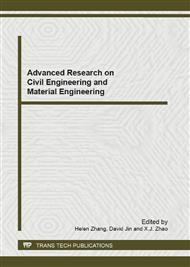p.182
p.187
p.191
p.196
p.200
p.204
p.208
p.212
p.216
Study on the Effective Slab Width of Composite Cable-Stayed Bridge under Axial Force
Abstract:
There exist evident shear-lag phenomena in large-span composite cable-stayed bridges under the action of axial force, especially in the deck with double main girders. In order to discuss the distribution law of the effective flange width coefficient along the span, caused by axial force, finite element computations of five composite cable-stayed bridges and theoretical analysis have been performed. The transmission angle of axial force caused by the axial compression of stay cables was given, meanwhile the formulas for computation effective slab width coefficient under axial force were suggested.
Info:
Periodical:
Pages:
200-203
Citation:
Online since:
September 2012
Authors:
Price:
Сopyright:
© 2012 Trans Tech Publications Ltd. All Rights Reserved
Share:
Citation:


